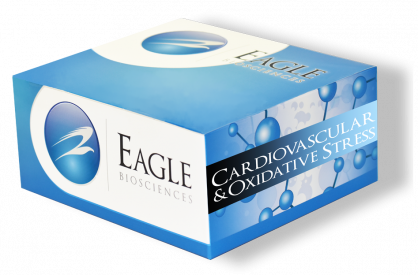HORAC Microplate Assay Kit
The HORAC Microplate Assay Kit is For Research Use Only
Size: 1×96 wells
Sensitivity: 0.1 ng/mL
Dynamic Range: 0.1 – 100 ng/mL
Incubation Time: 1.5 hour
Sample Type: Biological Fluids
Sample Size: 100 µl
Alternative Name: Hydroxyl Radical Antioxidant Capacity
Product manufactured in the USA
Assay Background
It is now well established that oxidative stress is a major risk factor for the development of several diseases including atherosclerosis, cardiovascular disease, and cancer. Oxidative stress is the condition in which there is an imbalance between the concentrations of reactive oxygen species (ROS) and physiological antioxidants, resulting in oxidative damage to many biomolecules within the cell. Products of ROS-mediated oxidation are widely used to monitor oxidative stress. However, it is also important to assess the antioxidant capacity of cells and biological fluids, as well as putative “functional foods” to assess their antioxidant capacity. Organisms possess multiple antioxidant systems to help regulate ROS and prevent oxidative stress. In vertebrates, these include enzymes that metabolize ROS, antioxidant proteins, and smaller molecules that are important antioxidants. These antioxidants include hydrophilic as well as lipid-soluble molecules that are localized throughout various tissues and cell types.
| Classification | Examples |
| Enzymes: | superoxide dismutase, catalase, glutathione peroxidase |
| Large Molecule: | albumin, ferritin, ceruloplasmin |
| Small Molecule: | ascorbic acid, α-tocopherol, β-carotene, uric acid, bilirubin, glutathione, methionine |
Given the multiplicity of antioxidant pathways, their centrality in the prevention of oxidative stress, and the influences of lifestyle and nutritional supplements on an individual’s antioxidant capacity, it is important to be able to quantitatively measure the total antioxidant capacity or antioxidant power in a biological specimen or in nutrients.
Related Products
Total Antioxidant Power Microplate Assay
GSH GSSG Microplate Assay
Creatinine Microplate Assay Kit


